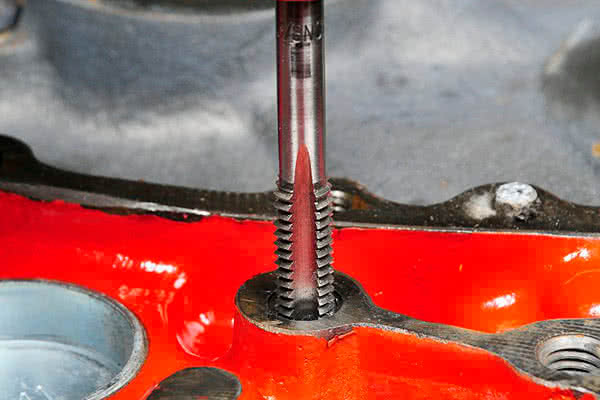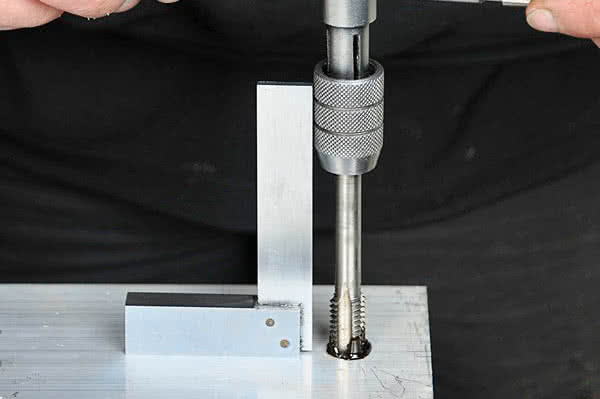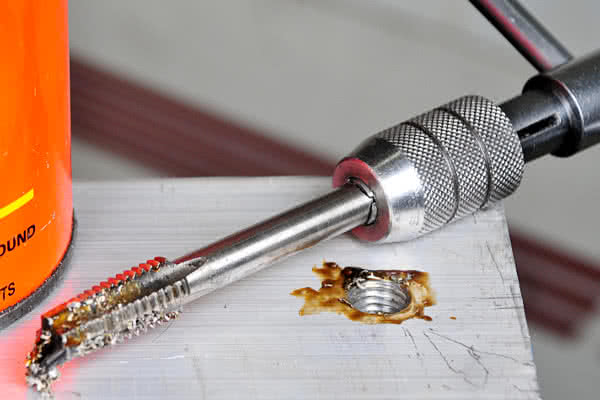How To Use a Tap and Die Set
Overview
Threads are part and parcel of working with anything held together with nuts and bolts. The two main thread cutting tools are the tap (for internal threads) and die (for external threads). Apart from being used to form new threads, taps and dies are very handy for restoring or cleaning existing threads.

Common automotive sizes are quarter inch, 5/16, 3/8, 7/16 and half-inch. Each is available in two thread pitches, fine (UNF/NF) or coarse (UNC/NC), the latter by far the most common. In metric, 6, 8, 10 and 12mm are the most useful sizes. While there are metric coarse and fine threads, metric fine is very uncommon until you get into larger (12mm) thread diameters.
Trying to make your own bolts is fairly pointless as it’s far easier (and better) to buy the correct bolts, screws or threaded rod.
When tapping a new thread, it’s important to get a number of things right to achieve a properly tapped hole. Foremost, the hole has to be the correct size. Too large and the threads will be weak; too small and turning the tap will be difficult and may cause a breakage. Individual taps often have the correct drill size written on their packaging.
Starting the tap straight is important. In deeper holes it will tend to straighten itself to a degree but if you start too crookedly it’s difficult to correct later in the process. One way to ensure the tap starts straight is to mount it in the chuck of a drill press. The chuck is then turned by hand to start the thread. Once it begins cutting true, the tap is removed from the chuck and used as normal with a handle. We can’t stress enough that the drill press should not be turned on with the tap mounted in the chuck — the press must be used purely as a hand-operated device to start the thread!

When starting a new thread, apply pressure to push the tap into the hole, or the button die along the shaft. This way you won’t strip the thread as it begins to form.
It's important to use lubrication for a clean cut and to help prevent breakages. Taps are very brittle and great care is needed. Try forcing it through in one go and you’ll almost certainly break it. As the tap is turned into the hole, resistance increases. When it does, stop and wind it backwards to clear the swarf. Half to three-quarters of turn in, two turns out is a typical action. This turn-ratio varies with the type of material — steel requires more frequent swarf clearance than softer materials like aluminium.

Note:
It’s more difficult to feel what’s going on with holes smaller than 1/4in or 6mm, so even greater care is needed. In addition, aluminium suffers from galling — if you can’t wind the tap out to clear the swarf, avoid the temptation of going further in, as the tap will eventually jam solid. Instead, progressively work it back and forth until it unscrews, then clean the tap and recommence tapping with plenty of lube.
Steps
*Important information* - Click here to read more about our How-To terms and conditions.